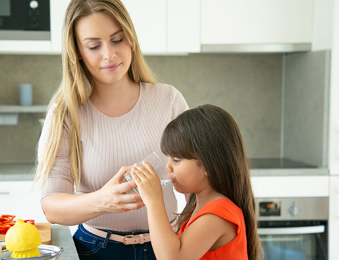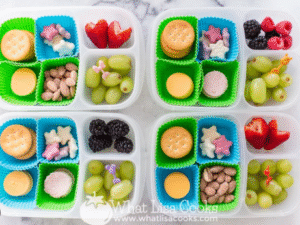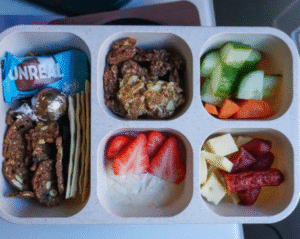Helping children develop healthy habits early in life sets the stage for long-term wellness. One of the simplest and most important habits is choosing water over sugary drinks. While sodas, sports drinks, and flavored beverages may seem fun and tasty, they can have negative effects on children’s health. Teaching kids why water is the best choice, and making it enjoyable for them, can have lasting benefits for their growth, energy, and overall well-being.
Children are naturally drawn to sweet flavors. This is not surprising because humans are wired to enjoy sugar. However, sugary drinks can lead to excessive calorie intake, dental problems, and even the risk of chronic conditions such as obesity or type 2 diabetes later in life. The good news is that children can learn to prefer water when it is introduced in positive and engaging ways.
One of the first steps in teaching children about drinking water is explaining its importance in simple, relatable terms. Instead of overwhelming them with scientific facts, focus on how water helps them in ways they can feel. For instance, water keeps their energy up when playing outside, helps their bodies grow, and keeps their skin and hair healthy. Kids respond well to explanations that connect directly to their daily experiences.
Setting an example is one of the most powerful tools parents and caregivers have. Children often mimic the habits they observe. If they see adults regularly drinking water and talking about its benefits, they are more likely to do the same. Family routines can include drinking a glass of water with every meal, carrying water bottles on outings, or having fun refillable bottles ready after school or sports activities. The consistency of seeing adults make water the go-to drink helps normalize it as the natural choice.
Another effective strategy is making water visually appealing and accessible. Fun bottles with favorite colors or characters, water infused with fresh fruits like strawberries, oranges, or cucumbers, and chilled water on hot days can make the experience more enjoyable. By creating a positive association with water, children are more likely to choose it over sugary drinks.
It is also helpful to educate children about the downsides of sugary beverages in a gentle way. Rather than presenting it as a punishment or a strict rule, frame the discussion around making smart choices. For example, explain that sodas or sugary drinks can cause quick energy bursts followed by crashes, may hurt their teeth, and do not give the body the hydration it needs. Framing it in terms of benefits for their bodies, rather than negatives, keeps the conversation encouraging rather than discouraging.
Practical routines play a key role in habit formation. Encourage children to drink water throughout the day instead of only during meals. Setting small goals, like finishing a bottle of water after recess or before starting homework, can help children gradually build the habit. Reinforcement through praise and acknowledgment of their efforts reinforces the positive behavior. Comments like “I love how you remembered your water today” make children feel proud and motivated to continue.
Schools and community programs can support children in making water their first choice. Many schools now provide water fountains or hydration stations, which encourage students to refill their bottles. Including lessons on hydration in health or science classes reinforces the importance of water in an educational context. Field trips or activities that involve hydration challenges, like tracking how many glasses of water they drink in a day, can make learning about water fun and interactive.
Peer influence can also be powerful. Children are often motivated by what their friends are doing. Organizing group activities where everyone drinks water, like water breaks during sports or team events, helps normalize the habit. When children see their friends choosing water, they are more likely to do the same, creating a supportive social environment for healthy choices.
In addition to daily habits, it is important to discuss moderation with children. Occasionally enjoying a sugary drink is okay, but the goal is to help them understand that water should be their main source of hydration. Encouraging mindful drinking, where children notice how their body feels after water versus sugary drinks, helps them make conscious decisions and understand the benefits firsthand.
Parents can also involve children in practical learning activities. Simple experiments, like showing how sugar dissolves in water or reading labels on beverages to compare sugar content, can make the learning process interactive and memorable. Cooking or preparing meals together can include tasting naturally flavored water or homemade fruit-infused drinks, reinforcing the message that healthy hydration can be enjoyable and tasty.
Consistency and patience are key. Changing habits takes time, especially when sugary drinks are widely available and marketed to children. Gentle reminders, positive reinforcement, and frequent discussions about the benefits of water help reinforce the habit without creating resistance or conflict. Celebrating small milestones, like finishing a week without sugary drinks or trying a new fruit-infused water flavor, encourages children to keep going.
It is equally important to maintain a supportive environment. Stock the home with water and limit the availability of sugary drinks. When water is the easiest and most convenient option, children are more likely to choose it naturally. Encouraging regular water breaks and keeping water bottles within reach in school bags or during activities makes it simple for children to develop the habit independently.
Over time, children who learn to prefer water experience a range of benefits. They maintain better hydration, have more stable energy levels, and are less likely to develop unhealthy weight patterns. They also carry these habits into adulthood, making choices that support long-term health and wellness. By teaching children the value of water over sugary drinks, parents and caregivers are equipping them with an essential life skill.
Ultimately, fostering healthy hydration habits is a combination of education, example, and environment. By making water accessible, enjoyable, and clearly beneficial, children learn to choose it naturally. Gentle guidance, consistent reinforcement, and interactive learning help children understand why water matters, making it a fun and positive habit rather than a forced rule. These early lessons in choosing water over sugary drinks can create a foundation for a lifetime of healthy choices, energy, and well-being.



